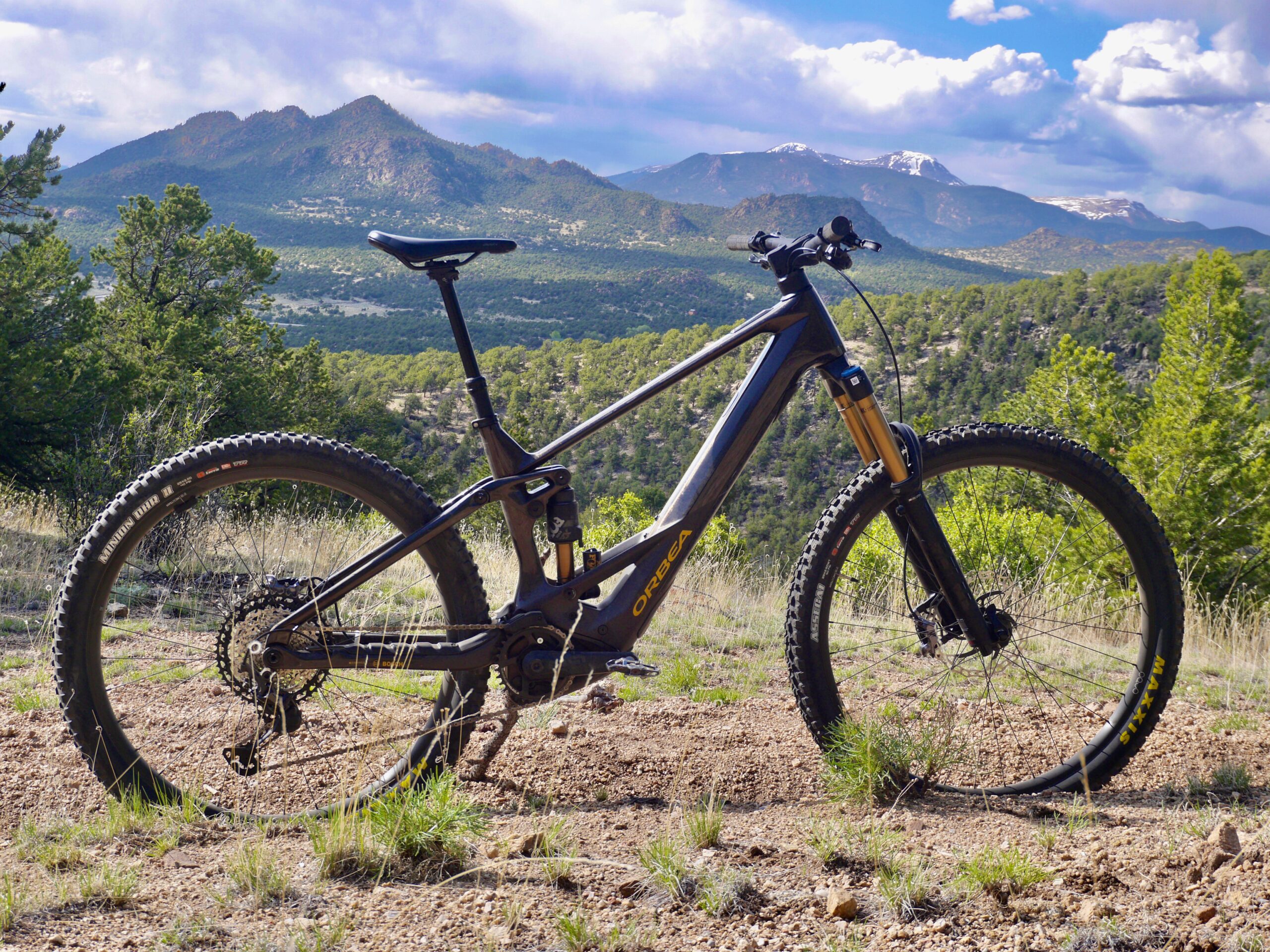
Simon Stewart (6’, 170 lb / 183 cm, 77.1 kg): We’ve been looking forward to getting an Orbea Wild in for review ever since it launched last year. We had questions about how it might compare to its non-motorized sibling, the Rallon — which we really liked — and how the slight geometry tweaks to accommodate the drive system and Orbea’s claims of a substantial increase in frame stiffness would play out on the trail.
Orbea sent us the Wild M-Team, which slots in right under the top-spec Wild M-LTD. The M-LTD gets the Bosch Race motor while the M-Team comes equipped with the Bosch CX Performance Line motor, and honestly, that’s really the only difference that matters, as the rest of the parts on the M-Team can be customized to basically mirror the M-LTD spec.
Out of the box, the Wild looks tidy, the headset cable routing lends a clean aesthetic to the cockpit. The Bosch handlebar remote is wireless, and there’s no handlebar display (available as an option), both contribute to the uncluttered appearance. I also have to mention the fabulous Cosmic Carbon paint, with bass boat-esque gold metal flake that ties in beautifully with the gold Kashima on the suspension — so a pretty damn good-looking bike overall.
Fit on our Large Wild is pretty close to spot-on for me. The 480 mm of reach feels plenty roomy, but not overly so due to the fairly steep seat angle (77.5º). Orbea builds in a ton of overlap in their size chart for different riding styles, sizing up or down is made easier due to the available custom options like stem length, dropper travel, and handlebar rise. Had I been custom ordering this bike myself, I would have stuck with the Large, but spec’d the longer 200 mm dropper post and the higher 35 mm rise handlebar options.
My first impressions out on the trail were exceedingly positive. Orbea is not shy when it comes to talking about how stiff this new frame is (51% stiffer), in relation to the previous Wild, and it’s also claimed to be 10% stiffer than the Rallon — which is itself already quite stiff. In comparison to other e-MTBs we’ve tested, the stiffness is noticeable. The Wild really shines on awkward, slow, technical off-camber sections, where frame flex has a tendency to throw you off line, but instead, the Wild remains composed and holds its line brilliantly. Composure seems to be a bit of an underlying theme with the Wild, on all of the varied terrain I’ve ridden so far, it has felt, for lack of a better word, calm — it just has this sense of never being pushed hard, not breaking a sweat, never reaching its limit, that’s been so endearing.
Suspension-wise, it’s closer to the Pivot Shuttle LT in feel than the Specialized Levo, which is a good thing, as I prefer the Pivot in that department. I’m looking forward to seeing how the Wild does on my steep climbing benchmarks. It gets excellent traction from the rear end, combine that with the stiff frame, torquey Bosch motor, and climbing-friendly geometry, and I think it looks super promising. The only negative I’ve encountered is that, while the bottom bracket is not low, and the cranks have plenty of clearance, I’ve been hitting the drive system skid plate quite a bit, something I’ll be keeping an eye on.
I’ve been getting along well with the Wild, and look forward to piling on the miles. We’ll be range-testing the 750 Wh battery, getting more acquainted with the Bosch drive system, and putting it to the test on our burly e-MTB test loops. I will say that I’m genuinely excited to ride the Wild and think things are pointing towards it being a top contender in this category, but we’ve still got a lot of testing to do, so stay tuned for the full review.
